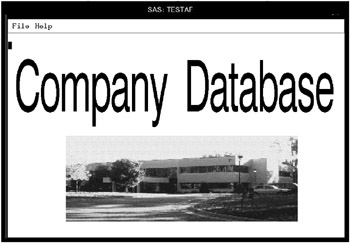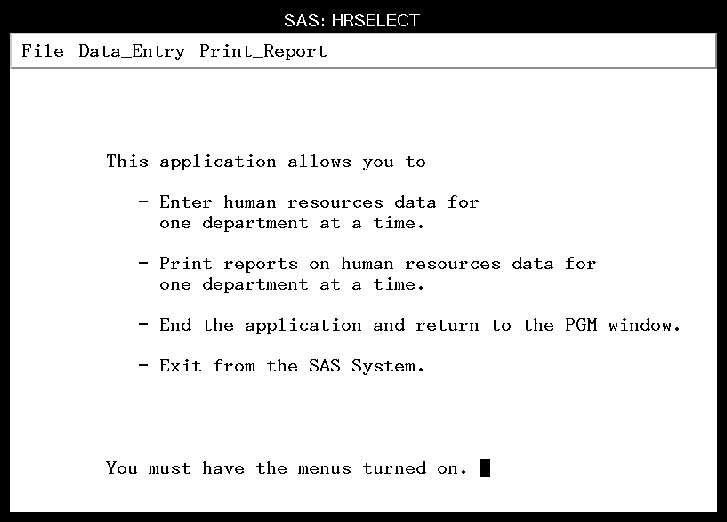
With the VAR statement, you let SAS know of which column you want to calculate the mean.You use the MEAN keyword to only calculate the column mean. With the DATA=-option you provide the input dataset. You start the procedure with the PROC MEANS statement followed by the DATA=-option.
#PMENU SAS PROCEDURE CODE#
If you use PROC MEANS to calculate the average of a column in SAS, your code has (at least) 3 parts: It provides descriptive statistics such as the number of observations, the sum, the mean, and the median. PROC MEANS is a SAS Base procedure that you can use for analyzing your data. The second method to calculate the mean of a column in SAS is with PROC MEANS. Calculate the Column Mean in SAS with PROC MEANS
#PMENU SAS PROCEDURE HOW TO#
However, this method either shows the column average on your screen or creates a table with the result.ĭo you know? How to Count the Number of Observations per Group with PROC SQL 2. Especially, if you have experience with coding in SQL. To summarize, PROC SQL provides a quick and easy way to calculate the average of a column.

Throughout this article, we will use the terms mean and averages interchangeably. At the end of this article, you find a table with a comparison of the 5 methods. We provide examples with reusable SAS and discuss their advantages and disadvantages. In the remainder of this article, we take a detailed look at all 5 methods. The Data Step is more complex but shows you the cumulative mean too. PROC SQL provides the easiest way to get the column average, while the other procedures give you more flexibility. In SAS, you can calculate the mean of a column with PROC SQL, PROC MEANS, PROC SUMMARY, PROC UNIVARIATE, and an ordinary Data Step. In this article, we discuss how to calculate the mean of a column in SAS. If you work with tables, you can calculate the mean of a row or a column. Run proc plm restore=work.If you analyze your data, you probably want to know descriptive statistics such as the sum and the mean. PROC PLM Example- proc glm data=sashelp.class The CLASS variables in the model had a GLM parameterization.C was specified in the CLASS statement.For example, the statement is detected as not valid unless all of the following conditions are met: lsmeans c / diff With the stored model, all statements following this are checked for consistency.

This is because the information of the classification variables and the model effects that we want is contained in the source item store. The PLM procedure is different than other procedures in SAS/STAT, in this, it does not have common modeling statements such as the CLASS and MODEL statements. The Syntax of PROC PLM- PROC PLM RESTORE=item-store-specification The PLM procedure restores the model information and performs post fitting tasks such as:

The biggest advantage of using this is that we need not rerun models thereby saving our time. Glm, and then performs additional inferences and scoring. The PLM Procedure in SAS/STAT takes only the information of the model stored from a number of SAS/STAT linear modeling procedures such as corr. SAS/STAT Post Processing Procedure – PROC SCORE b.


 0 kommentar(er)
0 kommentar(er)
